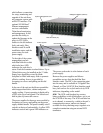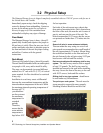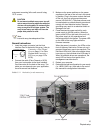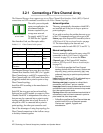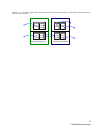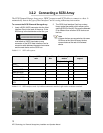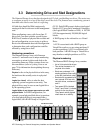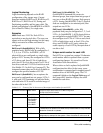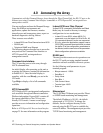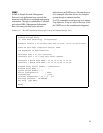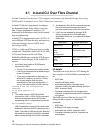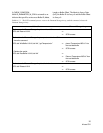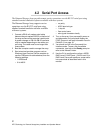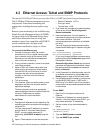
16
Drive, sled numbering
Logical Numbering
Logical numbering depends on the RAID
configuration of the storage array. Current
firmware includes RAID Level 0, RAID Level 5,
RAID Level 1, RAID Level 10, Zoning and
Partitioning capability and hot spare sleds. The
default configuration is QuickRAID0 0 or JBOD
(Just a Bunch of Disks), in a single zone.
Examples
JBOD
mode uses 24 LUNs. Each LUN is
equivalent to one physical drive. The array can
operate with several sleds missing, but the empty
sled(s) are treated as offline and cannot be
configured.
RAID Level 0 (QuickRAID0 [n])
With a fully
populated array, RAID 0 may be configured as 1,
2, 3, 4, 6, or 12 LUNs. As RAID0 1, all 24
physical drives are configured as a single stripe
group or LUN. You may also configure two LUNs
of 12 drives each, three LUNs of eight drives
each, four LUNs of six drives each, six LUNs of
four drives each and 12 LUNS of two drives each.
(See Exhibit 5.2-3 in
RAID Level 0
on page 52). The
command assumes there are 24 drives available to
configure the specified number of LUNS.
RAID Level 1 (QuickRAID1)
has no options: the
array can be configured into six groups, LUNs 1-
6, with each LUN containing two physical sleds;
each sled in the LUN would be a mirror image of
the other sled in the LUN.
RAID Level 10 (QuickRAID10)
The
QuickRAID10 command first creates six
mirrored groups, then stripes them into groups of
one, two or three RAID 10 groups. Each group is
a LUN. Issuing QuickRAID10 2, the 12 physical
sleds are configured as six mirrored pairs, then
striped into two LUNs.
RAID Level 5 (QuickRAID5)
with a fully
populated Array may be configured as 1, 2, 3 or 4
LUNs. As QuickRAID5 1, all 24 physical drives
are configured as a single RAID 5 LUN. You may
also configure two LUNs of 12 drives each, three
LUNs of eight drives each, or four LUNs of six
drives each. RAID Level 5 parity reduces the
usable capacity of each LUN by the equivalent of
one drive sled.
Unique serial number for each LUN
Each LUN in a system has a unique 24-character
serial number which is updated when a system
configuration changes. It is stored in a Device
Association Table on each drive.
When a drive or sled is replaced in QuickRAID
configurations that allow for hot swap, a new
serial number is computed and is stamped onto all
member drives of the RAID group. The CLI
command
LUNInfo
or the
Logical Units
page of
the ExpressNAV interface
displays the serial
number for each drive.
Exhibit 3.3-1 Format of the 24 characters of the unique serial number for each LUN
Character Placement Valid values
Example of unique serial number for a JBOD configuration:
1231231231231231231XAC0
0-19 Any ASCII char Drive Serial Number
20 1 for RAID1
A for RAID10
0 for RAID0
5 for RAID5
X for JBOD
RAID Configuration Character
21 A – Z LUN Configuration Iteration Character: starts at A and increments every time
a member drive is replaced in a RAID Group. Reverts back to A any time the
Generation Character is updated
22 A – Z Generation Character: starts at A and increments every time a new
configuration is stamped on the system. When it reaches Z, rolls over to A.
23 0 Reserved for future use



